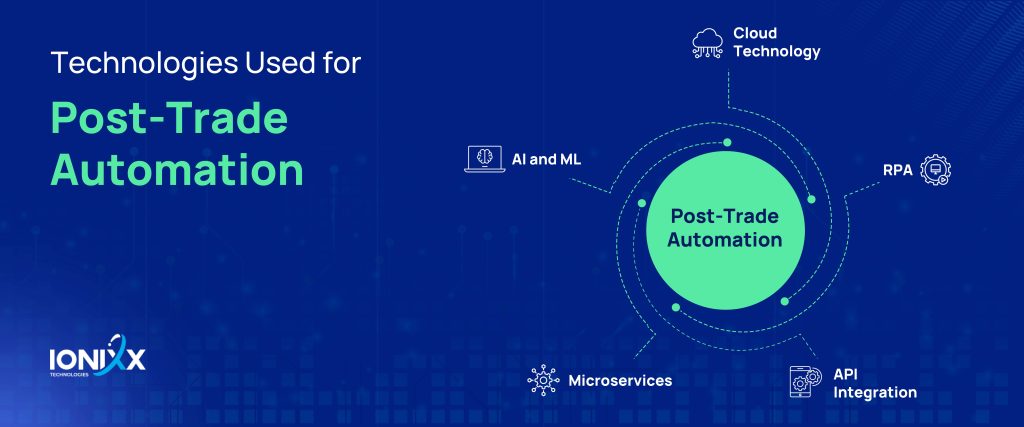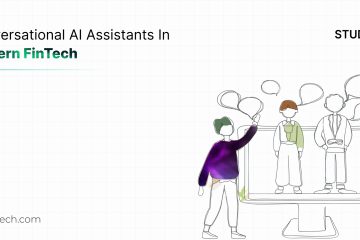
The limitations of existing technology have forced capital market firms in the US securities landscape to modernize the backend infrastructure. The need for transformation is also driven by the changing settlement cycles from T+2 to T+1.
As automation adds layers of ease and efficiency to post-trade workflows, the role of emerging technologies is critical in staying ahead. Brokerage firms are preparing for today’s challenges while also establishing provisions for adapting to future evolution.
To accommodate this growth in trading activity and the volume surges associated with basket trading strategies, self-regulatory organisations (“SROs”) have replaced manually intensive order routing and execution procedures with automated systems that permit electronic routing and execution of certain orders.6 These automated systems, which generally handle only small orders, successfully have increased the capacity of U.S. securities markets and have improved the efficiency and timeliness with which transactions are executed.7 Indeed, the SROs have exercised foresight in anticipating future volume levels and designing and continually monitoring and enhancing automated systems to accommodate anticipated volume levels.
In this blog, we delve into what constitutes a modern technology architecture for post-trade automation, highlighting its benefits, key components, and the role it plays in transforming the landscape.
Legacy systems are becoming increasingly redundant
Legacy systems fail to process large volumes of trade and require excessive monitoring and manpower. Here we outline a few issues that legacy systems present.
- Cost inefficiencies: Legacy post-trade processing systems require substantial fixed costs and continuous investments. Managing these systems often requires a dedicated IT team to maintain and find solutions to keep them running. However, these outdated systems struggle to handle the increasing volume of data and are too rigid to comply with evolving regulatory standards.
- Erroneous and failed trades: In rapidly growing markets where trades occur at lightning speed, even the most proficient traders are prone to errors. The small missteps happen due to manual intervention required in legacy. These missteps can give rise to significant liabilities, particularly in high-frequency electronic trading, potentially causing substantial impacts on the profit and loss statement.
- Settlement failures: Trade processing and settlement failures can severely damage client relationships, eroding trust and confidence in a firm’s ability to deliver on commitments. multiple errors can drive clients away, searching for more reliable brokers. Regulatory requirements have tightened worldwide since 2008, impacting post-trade activities like clearing and reporting. Firms without robust systems to manage transaction data risk regulatory violations and substantial fines, which can severely damage their reputation.
Technologies Used for Post-trade Automation
To modernize the back office, emerging technologies such as Cloud, RPA, APIs, and AI, are being adopted. These are the important levers in the next phase of this journey. Ionixx Technologies has supported several broker-dealers in upgrading their systems and streamlining their trade processing. Here are a few technologies that are in great demand by capital market firms.

- Robotic Process Automation – RPA automates trade confirmation and matching processes. This significantly reduces manual effort and minimizes the risk of errors. With the advancement of digitalization, the explosion of data, and cheaper computing, RPA solutions are making the post-trade domain efficient and smart
- Microservices and API -With growing trade volumes, strategic data handling and transfer are necessary for successful post-trade optimization. APIs act as the interface between different microservices, enabling seamless communication, better data access, and improved data exchange. By connecting various systems, such as trade confirmations, settlement, reconciliation, and reporting, APIs facilitate real-time synchronization, ensuring accurate and up-to-date information across the entire post-trade workflow.
APIs with microservices expedite STP rates. They help process trades automatically from execution to settlement without manual intervention. This eliminates the need for manual data re-entry, reduces operational risk, improves speed, and enables faster processing of trades.
- Cloud Technology – Cloud technology is a logical next step for firms looking to build or replace solutions for optimized post-trade processes. It offers an option for implementing new technology and replacing existing components.
- AI and ML – Automated post-trade processing systems with AI and ML capabilities enable efficient data handling, analytics, and improved profitability.
Core Challenges of Legacy Systems and Key Technology Recommendations
Legacy systems pose various challenges, including limited scalability, data access issues, vulnerability to cyber threats, and performance limitations. To overcome these obstacles, implementing technology recommendations such as adopting microservices, robust data integration, enhanced security measures, and transitioning to cloud-based solutions is crucial.
| Core Challenges with Existing Systems | Technology Recommendation |
| Limited scalability, agility, and interoperability | Adopt a microservices architecture |
| Fragmented data and poor data accessibility lead to delays | API integration facilitates seamless data exchange across middle and back-office functions |
| Poor flexibility and adaptability to change rendering performance limitations | Transition to cloud-based technology |
Final Thoughts
Many broker firms now feel that legacy systems are largely hindering their operations and affecting trade settlement rates. So, it is important that firms are nimble in taking to new technology that drives operational efficiency.
Post-trade automation requires prioritization, given the numerous shortcomings of legacy systems.
Modern technologies are a must for ongoing market volatility, strong regulatory headwinds, and the growing need to harvest and leverage real-time data.
To avoid any challenges during the technology adoption and back-office automation, firms need strategic technology partners. They should be capable of enabling large-scale digital transformation initiatives that optimize post-trade settlements.
Get in touch with us. Ionixx has been helping banks and broker-dealers in digitally transforming their processes with tailored software solutions.


